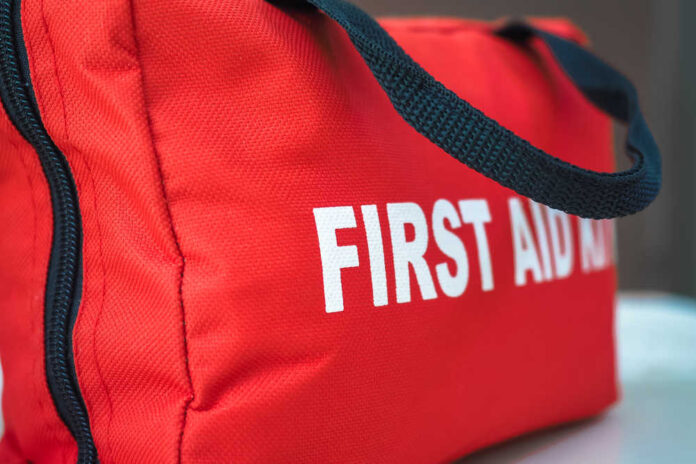
First aid is the emergency care given to an injured or sick person. In an emergency situation, a bystander knowing first aid could save someone’s life.
First aid does not necessarily require extensive medical training, and you can learn some simple techniques from books, websites, or classes.
The “ABCs” of first aid is a helpful way to easily understand and remember how to approach an emergency situation and what to check for.
A – Awake
Is the person conscious and alert?
Are they responsive to you? Can they answer questions such as what their name is, where they are, and what the current date is? Is something blocking their airway, preventing them from breathing or talking?
If the person is not waking up or responding to you, call 911 immediately.
If they are alert and talking, ask them questions about who they are, what their situation is, signs and symptoms, allergies, current medications, previous medical conditions, and emergency contacts who should be called.
B – Breathing
Is the person breathing?
Do they have an obstructed airway preventing them from breathing?
Are they gasping for air or struggling to breathe?
If their airway is blocked, you may need to perform the Heimlich maneuver.
If the person is not breathing, begin CPR. Direct someone to call 911 if it hasn’t been done already.
C – Circulation and Compressions
Do they have a pulse?
Is their skin pale, blue, or gray?
If the person has no pulse and is not breathing, you must begin chest compressions.
In cases where CPR is needed, the American Heart Association stresses that chest compressions should be the first step before checking the Airway and Breathing—recommending the acronym CAB instead of ABC.
If the person is bleeding, apply pressure to the wound with a clean cloth.
Variations on the ABC Guidelines
There are multiple variations of the “ABCs” of first aid, but they all essentially represent the same basic concepts.
Some places advocate for the acronym DRSABCD (like “Doctor’s ABCD”) for:
- Danger: Check the scene and the person for any possible dangers to you or them.
- Response: See if they are awake, can move or react, and if they can answer questions.
- Send for help: Call 911 or your local emergency services.
- Airway: Make sure their airway is open and clear.
- Breathing: Check if they are breathing or to what degree they are struggling to breathe.
- Cardiopulmonary resuscitation (CPR): If you know how to do so properly, perform CPR.
- Defibrillation: If you have a portable defibrillator, follow the instructions and use it on the person.
Most importantly, in any emergency situation, try to stay calm and approach the problem with care. Assess the situation as best you can and call for help. Follow the instructions of the dispatcher or emergency personnel.
If you really want to be as helpful as possible in emergencies—and you should—it’s a good idea to take a first aid and CPR class. Many community centers, hospitals, and workplaces offer these courses.
Hopefully, you will never need to use first aid, but being prepared can make all the difference in an emergency.






















